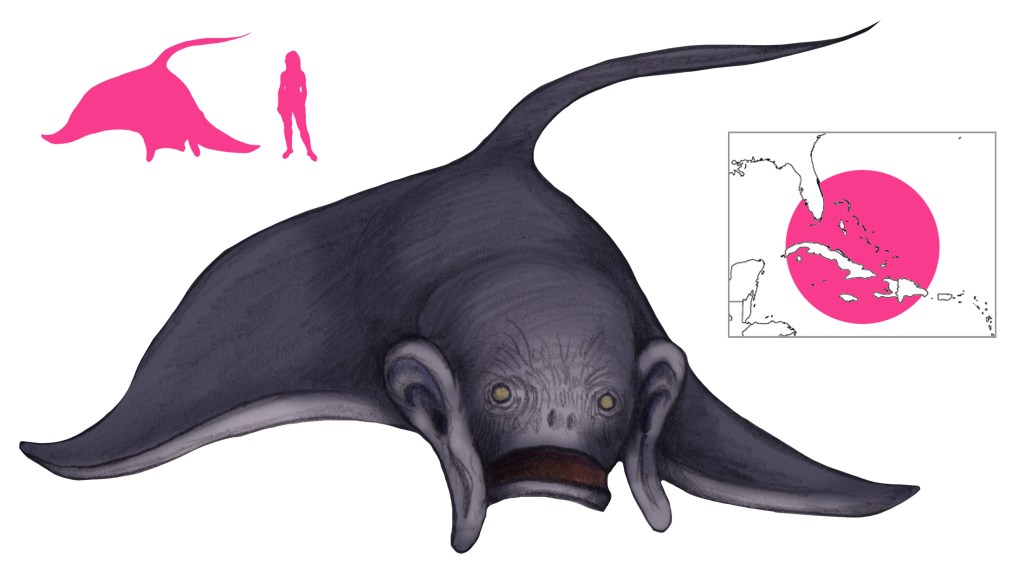Variations: Tebuch, Thébuch, Tebuch Pontarof

Thevet tells of a West Indian fish called the Tebuch, Thébuch, or Pontarof, which means “robber fish” or “evil fish”.
A pontarof is the size of a porpoise or bigger, but not as long. Its round head is human in appearance except for the ears, which are four fingers longer than human ears. They are permanently extended from the head. The fins of the pontarof are the largest fins Thevet had seen.
The pontarof earned its name from its cruel behavior. A pontarof will wait in the water until a child enters the river to bathe, whereupon the fish immediately seizes them. It doesn’t eat the child, but toys with them like a cat with a mouse, wrapping its fins around them, tossing them into the air, holding them with its tail… Eventually this grisly game drowns the child, and the pontarof bores and releases it. For this reason, the natives of the land despise pontarofs and will hunt and kill them wherever they are seen. Pontarof meat is not eaten.
De Montfort believed the pontarof to be some kind of octopus. It seems more likely that it was a manta ray. The human-like face, “ears”, and huge fins are all reminiscent of mantas, which have long had a bad reputation.
References
de Montfort, P. D. (1801) Histoire Naturelle, Générale et Particuliere des Mollusques, Tome Second. F. Dufart, Paris.
Thevet, A. (1575) La Cosmographie Universelle. Guillaume Chaudiere, Paris.
I like the fusion of a manta ray and the description of the creature as given in the atlas. It’s pretty haunting.
P.S. Did you get my e-mail?
LikeLiked by 1 person
Yes! Didn’t get back to you yet though 😦
LikeLike
Okay, cool. As long as you got it, that’s the important part.
LikeLiked by 1 person
Why do manta rays have such a bad reputation? I’m guessing it has nothing it has nothing to do with Steve Irwin …
LikeLiked by 1 person
Scary big horned fishes.
LikeLiked by 1 person
So the same reason as whales?
I wonder if this is the closest we’ll get to a were-manta or something.
LikeLiked by 1 person
Thevat’s stuff sounds so interesting, wish I could read it.
LikeLiked by 1 person
You can! It’s all freely available online.
LikeLiked by 1 person
Oops, I might have misunderstood you! The caveat is of course that you should be able to read French. There are some good English translations out there though!
LikeLiked by 1 person
Say, didnt people use to believe that mantas were man eating monsters that grap sailors with their fins, drag them into abyss and devour them?
LikeLiked by 1 person
Yup. Scary big winged fishes
LikeLike
Ps just wanted to let you know that i read and keep all these mails because I find it hugely fascinating!
Keep it up!
Paul
LikeLiked by 1 person
Ah thanks 🙂
LikeLike
Pingback: mythologies of the carribean – World Mythology
Pingback: MYTHOLOGIES OF THE CARRIBEAN – Indigenous Peoples Literature
My face when I go back to the middle ages and everybody’s dying from the plague instead of fighting giant snails and rabbits:
LikeLiked by 1 person